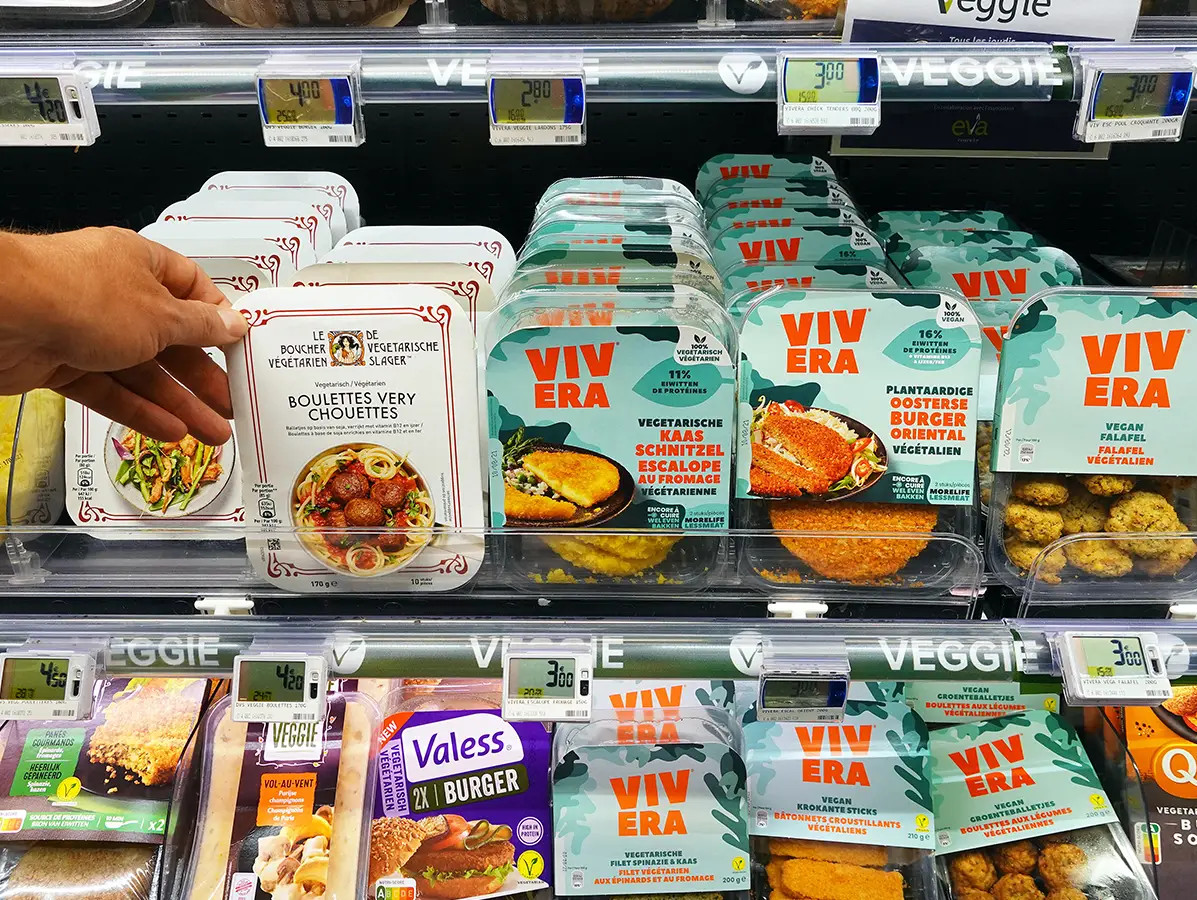
Producers and regulators value transparency in the food chain, but consumers also want to know where their food comes from, who made it, and what it contains. Many studies have focused on their need for information about animal-based products, but what about plant-based alternatives?
What information do people consider important when choosing their food? A team of consumer scientists at Wageningen Social & Economic Research studied this question as part of a knowledge base project for the Ministry of Agriculture, Fisheries, Food Security and Nature. The study found that vegans, vegetarians, and flexitarians differ in the kind of information they want. Vegans and vegetarians mainly want to know whether the product contains any animal-based ingredients, while flexitarians are more interested in the nutritional content and want clear information about the product’s ingredients.
The team examined how consumers evaluate traceability information for two types of plant-based meat alternatives: tofu (a relatively unprocessed product) and plant-based sausages (a more heavily processed product). Previous research has shown that unprocessed products tend to trigger different information needs than more processed ones. Consumers appear to have different expectations and preferences in this area.
Through an online questionnaire, 554 respondents—110 vegans, 211 vegetarians and 233 flexitarians—shared their opinions about the traceability of two sample products: tofu and plant-based sausages. The researchers looked at the differences between the three consumer groups, as well as the motivations behind their preferences for certain product information. Consumers were asked how (un)important it is for them to see certain information on the packaging when buying tofu or plant-based sausages. They were also asked to rank the importance of various types of information. In addition, participants responded to statements about their food choice motives (such as health, animal welfare, or naturalness). With that information, the researchers were able to uncover the underlying drivers behind the information preferences of each target group.
Respondents rated all forms of product information as at least somewhat important, though some clearly stood out as more essential than others. While vegetarians, vegans and flexitarians generally share similar information priorities, we did notice some differences in importance. For example, both vegans and vegetarians consider the absence of animal-based ingredients as the most critical piece of product information—this applies to both tofu and plant-based sausages. Whereas flexitarians view nutritional information as the most important.
On average, the following three traceability aspects came out on top across all three consumer groups for both tofu and plant-based sausages:
First: Presence or absence of animal-derived ingredients
Consumers want to be certain whether a product contains animal ingredients such as egg, milk, or gelatin. On average, this aspect received the highest importance rating.
Second: Nutritional value
Producers are required to list nutritional values on their products, which is a good thing because most consumers want insight into calorie content, as well as levels of protein, fat, salt and sugar.
Third: Sustainability
Consumers place significant importance on how sustainably and environmentally friendly their food is produced. They prefer to see a traffic light-style label on the packaging that reflects three dimensions of sustainability: pesticide use, biodiversity and climate impact.
There were also differences between the three groups: vegans considered nutritional value less important for plant-based sausages, whereas flexitarians ranked this information as their top priority.

Consumers not only have specific preferences regarding they type of information they want on food packaging, but also how that information is displayed: key information should be visible at a glance. For example, they want the absence of animal ingredients clearly indicated on the front of the package, along with information about the product’s sustainability. Many consumers prefer a graphical label or icon for this purpose. At the same time, a significant number of consumers value additional written explanations or information, especially when it comes to nutritional values, allergens, and/or genetic modifications. This kind of information can be placed on the back of the packaging. As long as the most essential details are clearly displayed on the packaging, surveyed consumers deemed QR codes or links to online sources as an acceptable solution. Although not all consumers scan QR codes, these features can signal transparency and openness from the producer. They also offer a practical way to keep the packaging tidy while still giving interested consumers access to detailed information about ingredient origins, certifications, and sustainability initiatives.
Personal values and motives play a crucial role in shaping the type of information consumers want to see on packaging. Vegans and vegetarians, for instance, place more value on animal welfare compared to flexitarians. Therefore, it is no surprise that they have a stronger need for clarity on the presence or absence of animal-derived ingredients. At the same time, the deciding factor is not just dietary preference but also the underlying motivation. Among flexitarians, for example, those who are health-driven tend to focus more on nutritional values and the ingredients list. Flexitarians driven by sustainability motives, on the other hand, prioritize information about how the product was produced and its ecological impact. This pattern also appears among vegetarians: those guided primarily by environmental concerns are more likely to look at sustainability and organic certifications than nutritional content. Among vegans, these differences are less pronounced, as they tend to show above-average interest across the board—in both animal welfare and sustainable production.
Providing more traceability information mainly appeals to a “conscious” consumer group. These consumers want to be well-informed and make choices that align with their personal beliefs and goals. However, for mainstream consumers, the product must still compete on core aspects like taste and attractive pricing.
To support consumers in making more sustainable choices—such as opting for plant-based alternatives more often—it’s important that the packaging’s key message aligns with consumer motivations. Consumers want to know whether a product is minimally processed, vegetarian or vegan, and whether it has been sustainably produced. Despite the existing high number of labels, consumers still want a prominent label on the front of the package to make essential information easily visible.
Source: Vakblad Voedingsindustrie 2025